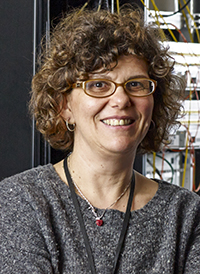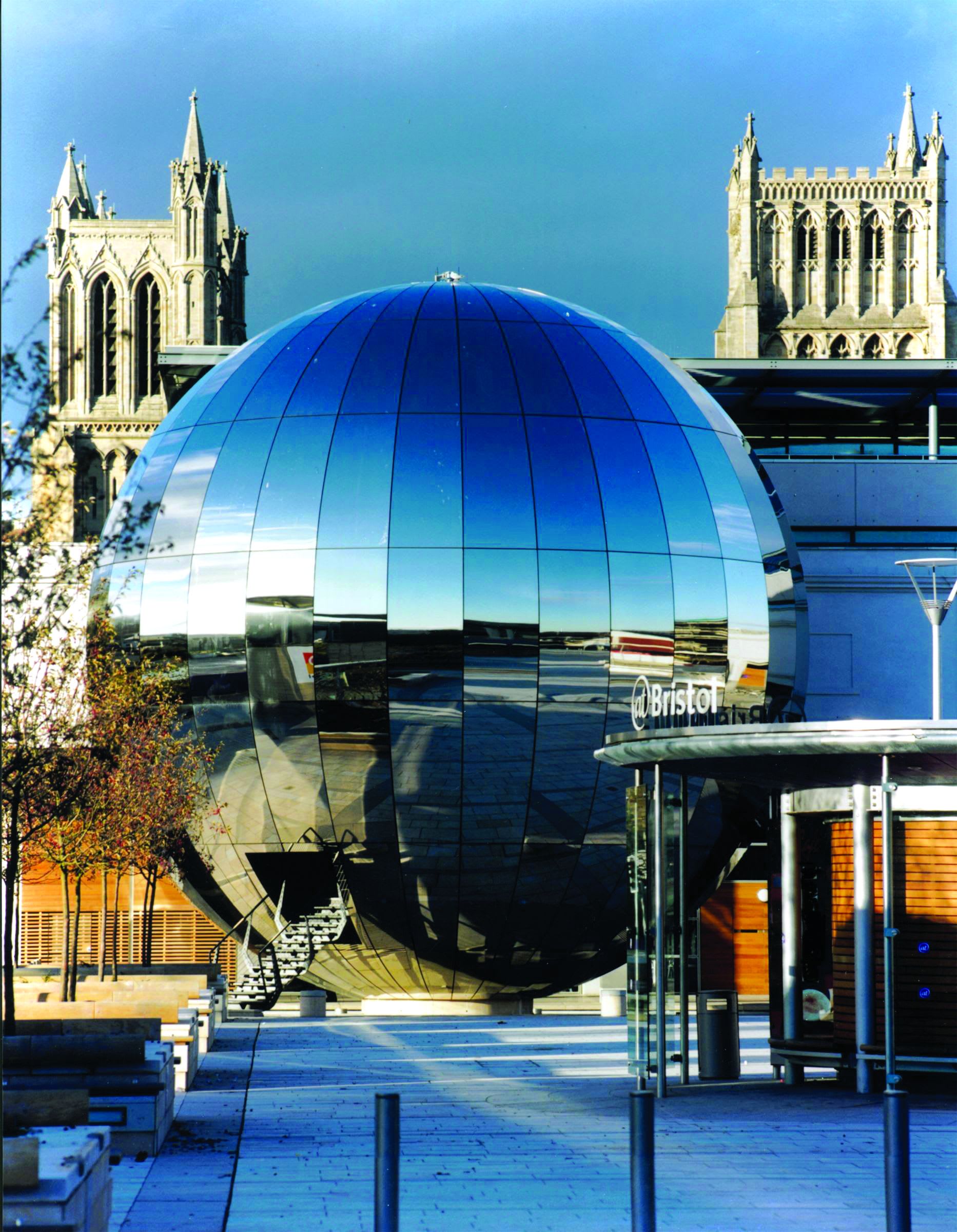A planetarium in Bristol has been converted into a “Data Dome” and is rolling out a city-wide data network. BIM+ spoke to Professor Dimitra Simeonidou, chief technology officer for smart city testbed Bristol Is Open, to learn more.

Dimitra Simeonidou
There has been a lot of hype surrounding smart cities in recent years, what has actually been implemented in Bristol?
We have rolled out a range of innovative communications network technologies needed to support smart city technologies, such as the Internet of Things (IoT), predictive analytics and Big Data. We installed a dark fibre ring network, using city council ducting, and significantly extended the city’s wireless infrastructure using high density wifi, LTE, and small areas of 5G technology, including high frequency millimetre wave and a prototype massive multiple-input and multiple-output (MIMO) testbed.
In April, we launched an IoT Mesh network that covers most of the city using access points mounted on 1,500 street lamp posts. The open access platform is essentially designed for low bandwidth applications, but can accommodate a large number of sensors spread around the city. The Mesh will enable IoT devices to be implemented at scale offering test facilities to network operators, application developers and manufacturers of IoT devices.
What key applications could the IoT have for Bristol City Council?
We are looking at connecting the Mesh network to different city infrastructure, for example to monitor assisted living applications and energy consumption in council houses, monitoring transport mobility and congestion via traffic lights, and developing algorithmic ways to solve congestion issues within the city.
Big Data can help cities gain deeper insights, how is it being harnessed in Bristol?
We have installed a Data Dome, in the city’s former planetarium, where real-time data, gathered from IoT sensors in the city-wide digital network, is collected, analysed using a high performance server and visualised in 3D on a giant 4K screen.

In one demonstration, the system collected CO2 emissions data from sensors located in streets across Bristol and used it to compose 3D models showing near real-time pollution levels.
The system was configured to show the likely impact of interventions, such as changing pollution levels when traffic was rerouted to another location. In future, it will enable many other functions, we will be able to visualise transport and citizen engagement, and make many smart interventions in the city.
Any other exciting trials?
We are working with SME partners to develop new intelligent algorithms based on high definition footage recorded on IP-enabled cameras placed around the city.
One firm is developing a computer vision algorithm able to extract data on transport movements from live camera footage. Another is using analytics to create a linguistic translation of the transport data that can be automatically transmitted to citizens in a tweet.
Imagine if there was a critical event in city, such as a fire, flood, or terrorist attack, the system would make it possible to send everyone a tweet explaining the situation then automatically update it as the situation progresses.
What has held back the realisation of fully-operational smart cities?
Most cities run different disconnected services, but smart environments must combine different data feeds to maximise efficiencies and improve coordination. For example, in transport systems you should have your smart parking feed connected to your congestion monitoring feed.
Bristol City Council is creating a converged operations centre for the city designed to combine data feeds for transport, the NHS, the police etc, in a single location. A public tender to provide the open data platform for the centre is about to launch and we are looking at developing an analytics solution able to analyse the converged data and develop different services based on different data feeds.
How will global smart cities develop in the medium-to-long term?
Over next few years we are going to see a lot of cities developing smart infrastructure. Simultaneously, the “bottom up” approach will see citizens making smart interventions in cities based around community participation. A good recent example is the Things Network, a global community of more than 2,000 people working to establish free-to-use, crowd-sourced IoT networks based on cheap, long-range, low bandwidth devices.
Looking beyond connectivity, smart cities need a wider environment covering data harvesting and data management, but no one is close to fully exploiting this yet.
Imagine if there was a critical event in city, such as a fire, flood, or terrorist attack, the system would make it possible to send everyone a tweet explaining the situation then automatically update it as the situation progresses.– Dimitra Simeonidou, Bristol is Open













